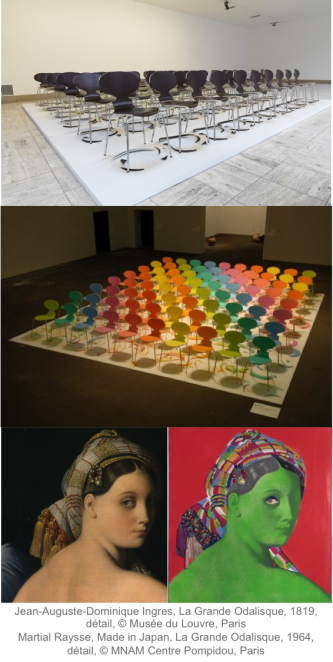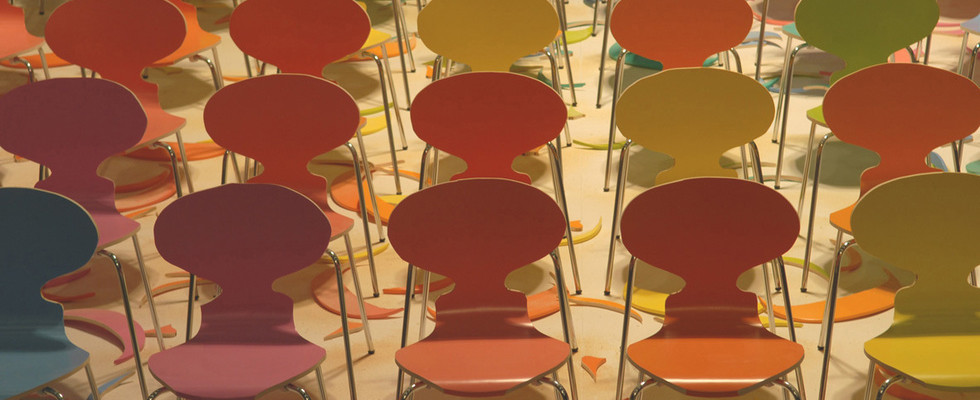Superflex, Copy Right (simple chair, brown version), 2007 © Nils Staerk gallery, Copenhague & Jousse Entreprise, Paris

First look
Here is a chair whose form is familiar to us, except that it has obviously been cut with a jigsaw, its “outgrowths” lying at its feet, in the sawdust.
Second look
“Copy Right” confronts us with the copy of the famous “Myren” chair (The Ant) created in 1952 by Danish designer Arne Jacobsen, an icon of Scandinavian design. The cut made it possible to transform an “inspired” industrial chair into a real “Myren” chair, identical to the original. Superflex thus questions the stakes of “copyright” and the creation of “new originals”.
Look at history
“Copy / create”: even artists of the twentieth century, such as Martial Raysse, confronted the masters in a constructive and rewarding dialogue. They show that evolution of forms also reflects its time, economy (“Made in Japan” title in 1964), history, and is not a mere copy. It is a reinvention, also part of our collective memory.
Look at our society
Where is the boundary between “innovation” and “copy” ? Which major innovations have not been followed by stirring trials on “the origin of intellectual property” ? But is copying not so colateral to success ? And if the best antidote to this risk was a continuous and collective innovation process, deeply rooted in the corporation’s DNA ?





